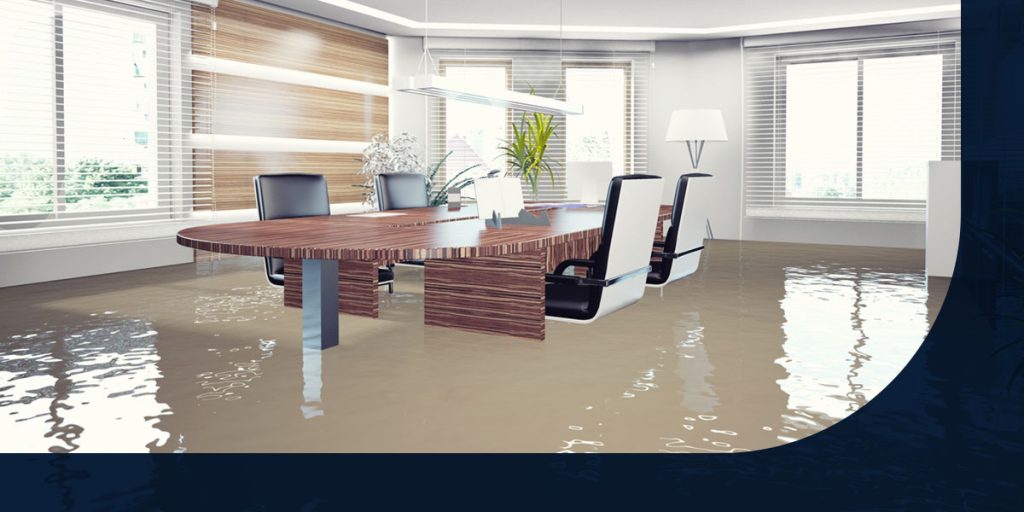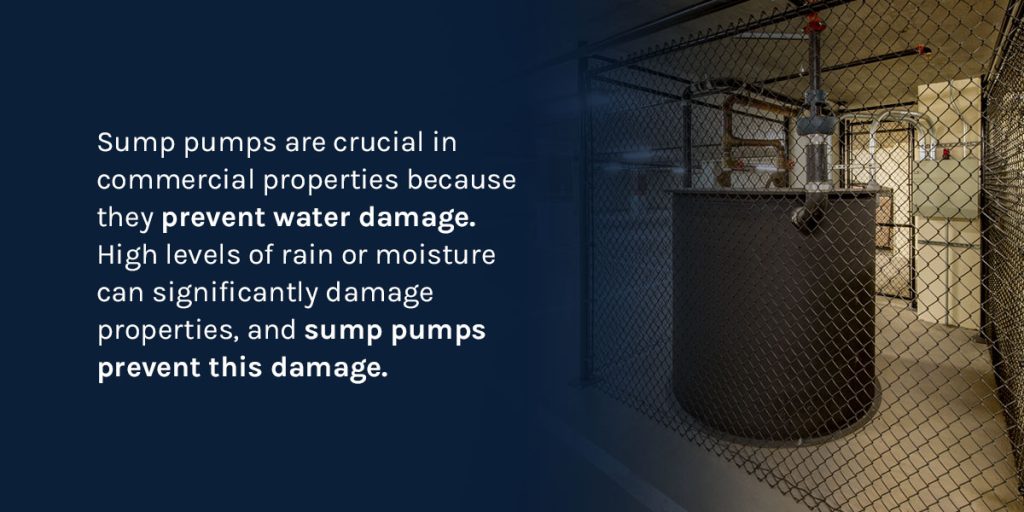
Commcercial sump pumps are crucial for flood prevention, especially for properties in flood zones and areas with high groundwater levels. Understanding what types of pumps are available and what size pump you need is an excellent step toward protecting your business from flood damage.
Also known as sump pumps or water pumps, flood pumps remove water from properties to prevent flooding.
A sump pump sits in a sump pit in the lowest part of a building and moves water outside in the event of heavy rain or flooding. A float switch attached to the sump pump rises when water accumulates. This switch activates the pump to automatically pump water into a discharge pipe.
A commercial sump pump is more heavy-duty than a residential pump. Commercial pumps contain stronger motors to facilitate higher flow capacities, and they have larger discharge and inlet sizes. These features allow them to pump higher water volumes and handle larger solids.
Before purchasing a sump pump, you should understand which options are available. You can choose between the following types of pumps:
A submersible water pump sits inside a sump pit and operates underwater. Submersible pumps operate more quietly, offer more pumping power and take up less space than pedestal pumps. However, they can take on more damage from being submerged underwater.
Pedestal sump pumps sit above sump pits. A pedestal pump’s intake device and float switch sit inside the sump pit, but its motor sits above it.
Pedestal pumps operate a little louder and require more space than submersible pumps, but they’re easier to access for maintenance purposes. They also have a lower up-front cost than submersible pumps, and they typically last longer because they undergo less wear and tear by sitting outside of the water.
A sump pump switch activates a pump to operate independently, but various types of switches achieve this function in different ways. A sump pump can have one of the following switch types:

Sump pumps are crucial in commercial properties because they prevent water damage. They’re especially essential for properties in areas prone to heavy rain or flooding, but they’re also important for properties outside of flood zones. High levels of rain or moisture can significantly damage properties, and sump pumps prevent this damage.
Installing a high-quality sump pump in your commercial property helps you maintain a dry building and prevent the following:
To choose the right sump pump for your commercial property, you must measure your space and calculate the necessary flow rate.
On a day when you experience heavy rain, measure the water that accumulates in your property’s sump pit. Allow your pump to remove water below its shut-off level, disconnect it from its power source and measure how high the water level rises within one minute. If your sump pit is 24 inches wide, 1 inch of water equals two gallons. If the pit is 18 inches wide, 1 inch of water equals 1 gallon.
Converting the accumulated inches to gallons reveals your necessary flow rate. After determining the flow rate, measure the distance between the bottom of your property’s basement and the discharge pipe. This reveals the head distance you need your pump to move the water.
Proper maintenance extends your sump pump’s life span and helps it operate efficiently. Annual maintenance achieves the following tasks:
When a technician performs maintenance on a sump pump, they test the motor to ensure the pump activates properly. They also clear debris from the sump pit to prevent the pump from clogging and check all components to ensure effective optimal operation.
While a sump pump can prevent water accumulation, flooding can still occur. Knowing what to do if your building floods is crucial. If your property takes on flood damage, Unlimited Restoration can offer the following services:

Powerful sump pumps protect commercial properties from flood damage by removing water from a building’s lowest point and discharging it outside. Installing a quality sump pump is an excellent way to protect your property, but it’s also crucial to create an emergency response plan (ERP) in the event your building floods. While sump pumps can effectively remove water as it accumulates, flooding is always a possibility you should prepare for.
An ERP can help you recover your business after an emergency, protect your assets, prevent additional damage and reconstruct. Unlimited Restoration can help your company create an effective ERP and recover following a disaster. URI provides reliable emergency response and restoration services for commercial and industrial buildings that experience damaging events such as fires, storms and flooding.
URI’s experienced team can assess your needs and build your company a customized plan. We can then upload this plan to the URI app as a useful emergency preparedness tool for your entire staff. This provides you with priority service in the event you experience property damage, allowing you to receive rapid support when you need it most.
Contact URI to learn more about emergency planning and restoration services.